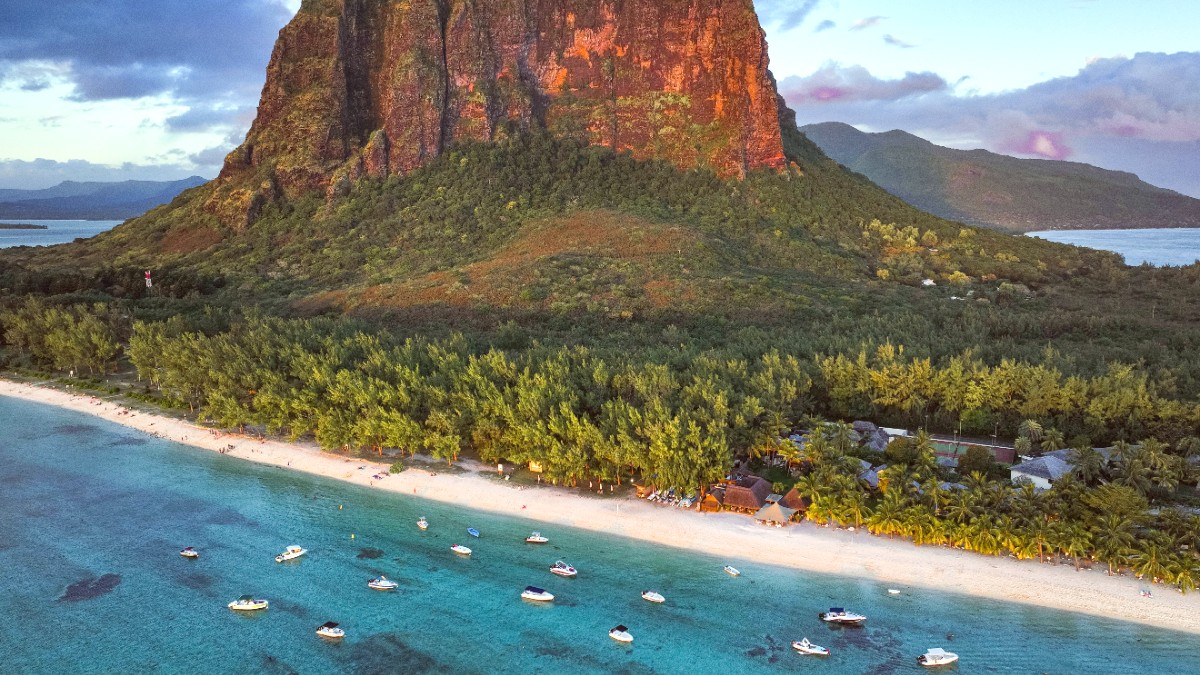
Mauritius
Rodrigues maintains a character distinctly its own, separate from the larger island of Mauritius. Part of the same nation, it holds an autonomous spirit. That spirit appears in its unique Creole culture, self-sufficient economy, and dedication to preserving natural heritage. Travelers come here to disconnect, to immerse themselves in nature, and to connect with a community prioritizing simplicity and genuine human interaction.
Plan your trip to Rodrigues with an open mind. The island offers a different rhythm, encouraging spontaneous exploration and genuine connection.
Embrace the slower pace. Quiet adventures await those who value simplicity and nature.
Rodrigues Island is the smallest of the Mascarene Islands, an archipelago including Mauritius and Réunion. It sits approximately 560 kilometers (350 miles) east of Mauritius, isolated in the vast Indian Ocean. This geographic isolation defines its distinct character and unique biodiversity.
The island covers about 108 square kilometers (42 square miles). Rodrigues is of volcanic origin, with a rugged, hilly interior sloping to a coastal plain. Mont Limon, 398 meters (1,306 feet) high, offers panoramic views. A remarkable feature is its extensive coral reef system. This reef entirely encircles the island, creating a vast lagoon twice the island's landmass, around 240 square kilometers (93 square miles). This expansive lagoon ranks among the largest in the Indian Ocean relative to its island size. It holds calm, shallow, turquoise waters, ideal for marine activities.
Located 560 km east of Mauritius.
Rugged, hilly interior with Mont Limon as highest point (398m).
Coral reef creates a lagoon twice the island's landmass.
Supports varied landscapes from dry scrub to lush reforested areas.
Native plant reintroduction and Aldabra giant tortoise restoration.
Rodrigues' topography includes valleys and hills, carved by ancient rivers and erosion. This varied landscape supports diverse ecosystems, from dry coastal scrub to lush, reforested areas in the interior. The island has made strides in conservation, reintroducing native plant species and, notably, the Aldabra giant tortoise, a close relative of the island's extinct endemic tortoise, to restore its natural environment.
Several small islets dot the lagoon, including Île aux Cocos and Île aux Sables. These serve as protected nature reserves for seabird colonies. These islets highlight the island's commitment to preserving its natural treasures.
The lagoon is a natural barrier, shielding the island from stronger ocean currents. It cultivates a rich, biodiverse marine ecosystem. Calm, shallow, turquoise waters are ideal for marine activities.
Grasp Rodrigues' unique geological history and its surrounding lagoon. This forms its climate and activities.
Rodrigues' history reflects a common pattern of colonial discovery and settlement in the Indian Ocean. Yet, it also tells an unique story of isolation and the forging of a distinct identity. Portuguese navigators first sighted the island in 1528, naming it after Diogo Rodrigues. Later, the Dutch briefly used it as a supply station in the 17th century. However, it was the French, in the early 18th century, who made the first attempts at permanent settlement, mainly for provisioning ships and later for the cultivation of crops.
The most noteworthy early French settlement was led by François Leguat and a group of Huguenot refugees in 1691. They sought religious freedom and a new life, establishing a small, self-sufficient community. Their accounts share valuable insights into the island's pristine environment and its now-extinct endemic species, like the solitaire bird and the Rodriguan giant tortoise. These early attempts at settlement were challenging, and the island remained largely uninhabited for extended periods.
Early settlers' accounts offer rare glimpses into Rodrigues' untouched environment and extinct endemic species.
French settlement attempts followed by British capture in 1809 during Napoleonic Wars.
Introduction of enslaved people and later Mauritian arrivals shaped modern Rodriguan population and unique culture.
Throughout its history, Rodrigues remained relatively isolated from the main island of Mauritius. This isolation fostered a strong sense of community and self-reliance among its inhabitants.
Port Mathurin, the administrative and commercial hub with a lively market.
Mainly of African and mixed European descent; predominantly Catholic.
Mauritian Rupee (MUR). Cash widely accepted, ATMs in Port Mathurin.
Pristine beaches like Pointe Coton, St François, and Trou d'Argent. Hiking in hilly interior and coastal paths for panoramic lagoon views. François Leguat Giant Tortoise and Cave Reserve. Marine activities like snorkeling, diving, kitesurfing in the vast lagoon.
Kitesurfing on world-class spots (Anse Mourouk, Graviers). Opportunities for deep-sea fishing in rich waters. Treks offer rewarding views of endemic flora. Kayaking and paddleboarding within the calm lagoon.
Immerse yourself in authentic Rodriguan life through music (Sega Tambour) and delicious Creole cuisine (especially octopus). Warm interactions with locals. Visit Port Mathurin market for local crafts and fresh produce. Discover unique island customs.